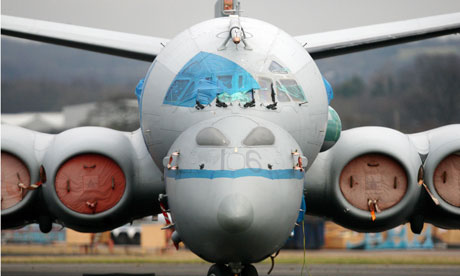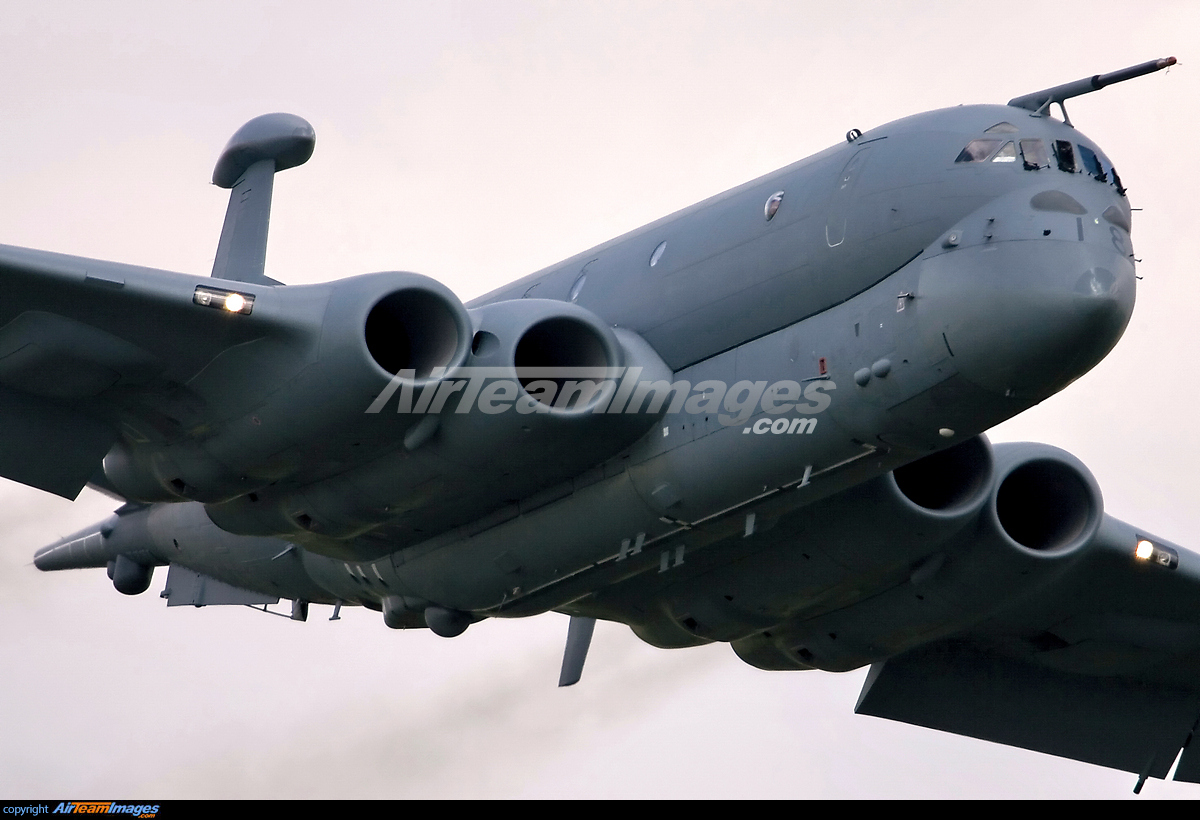
The Nimrod Maritime Reconnaissance Attack 4 (MRA4) programme started when BAE Systems was to be paid a 'fixed price' of £1.6bn for 21 Nimrod MR4s by 2002. It was to be a 90 per cent new build and the re-engined Nimrod MRA4 was a massive improvement over the MR2. Equipped with more than 90 antennae and sensors and containing over six million lines of software code, the MRA4 was designed to scan an area the size of the UK every 10 seconds.
Able to fly 6,000 miles or 14 hours without refuelling, the MRA4 was designed to gather, process and display up to 20 times more data than its predecessor. I remember a former Chief of Air Staff proclaiming that data linked 'Attack' Nimrod MRA4s positioned at six facilities could provide almost global strike coverage when armed with Storm Shadows. This would have required in-flight refuelling, which the MRA4 in the end was never cleared to do. But a combination of poor contract definition and flawed management plagued the programme such that eventually the UK was going to pay £4.5bn for just nine aircraft. The first production MRA4 flew in September 2009 and the remaining seven production aircraft were on schedule for delivery to the RAF by 2012, but it was all too late.
Part of the problem lay in the name. As the MRA4 was a completely different beast from the MR2, it should have been re-branded, especially after a Nimrod MR2 went down with the loss of 14 personnel over Afghanistan in 2006 when fuel leaked into hot air ducts. But the bad vibes of the Nimrod name were allowed to poison the atmosphere. In parallel, this seemed to be a programme that was out of control. No-one appeared to have a grip, an impression reinforced when ministers answered questions about the costs of the Nimrod MRA4 programme in both Houses of Parliament on 7th December 2010. In the House of Lords, the minister said: "The total expenditure on the Nimrod MRA4 programme as at 31st October 2010 was approximately £3.9bn, including £3.4bn for procurement costs." In the Commons, another minister was saying: "The estimate of procurement costs for the Nimrod MRA4 programme as at 31st October 2010 was £3.6bn."

Given apparent disarray over funding, when a 'potential safety issue' was found on the MRA4 fleet in October 2010 with no date in sight for resolution, the government felt it had no alternative but to 'not bring into service the Nimrod MRA4 maritime patrol aircraft programme' as part of the Strategic Defence and Security Review (SDSR). A relatively easy saving of over £2bn over the next decade also proved irresistible. 'We will depend on other maritime assets to contribute to the tasks previously planned for them,' said the SDSR. It was hoped that the MRA4s would be stored until such time as the economy or strategic climate were more favourably disposed towards them, but it seems that a decision has been made to scrap the lot.
What now?
Nimrod MRA4's role as an Intelligence, Surveillance, Target Acquisition and Reconnaissance platform would have contributed to a wide range of military tasks. These included the protection of the nuclear deterrent and deployed Maritime Task Groups, surveillance and tracking of surface shipping, and ongoing operations such as Afghanistan that were relevant to the security of the UK and its overseas territories. The aircraft would also have fulfilled a secondary role in support of long range search and rescue.
In the words of the Parliamentary Under Secretary of State (Defence Equipment, Support and Technology): "We are now developing a longer-term plan to mitigate the impact of cancellation on our continuing military tasks and capabilities." Top of the list is protection of the Trident deterrent. At a defence procurement conference in London in November, Admiral Sir Mark Stanhope was asked how concerned he was about Britain's anti-submarine warfare capability and the security of the strategic nuclear deterrent with the Nimrods gone. "I don't welcome the loss of the Nimrod," said the First Sea Lord. "It is an uncomfortable place to be, but under current threat levels, recognising what we'd expect to do independently and where we would have to rely on support from others is the least worst of a number of options."

Mitigating the lack of Nimrods when it comes to clearing a path for Trident will be very asset-intensive in terms of Merlin ASW and towed-array frigates. But it is manageable. Just don't expect those helicopters or frigates to be doing every task around the world that they currently undertake.
There is no money for high-end options such as the Boeing P-8 Poseidon or a European solution built around an Airbus Military A319/A320 MPA. Relying on European allies to take up the slack offers no way out because MR is not a growth industry.
It is not all doom and gloom. An E-3 AWACS, for example, can pick out a fishing boat in a 10m swell. It is the underwater picture that is the main area of concern and in an effort to think outside the box, the MoD is focusing now on sensors and skill sets rather than aircraft platforms. For example, the MRA4 had a 'wet' team of operators whose anti-submarine warfare skills are world class. How does the UK retain such personnel as well as other specialists who operate, among other kit, the underwing FLIR ball, which is in advance of what most nations others have got? The US Navy has selected the MQ-4C Global Hawk for its Broad Area Maritime Surveillance (BAMS) requirement and it might be possible to add an MPA/BAMS capability onto the RAF's Scavenger UAV ISTAR requirement by 2025. In other words, Nimrod crews will continue to use their skills without getting airborne, although UAVs won't be able to carry sonar buoys, torpedoes or life rafts anytime soon.
MoD is currently evaluating what might be added to what it has already got. When the MR2 was retired at the end of March 2010 to help pay for the Afghan campaign, the on-board counter-insurgency and rebroadcast kit went elsewhere. The MRA4 did not have a specific over-land role, and when MoD sought to bridge the Nimrod maritime gap with other assets including the RAF C-130 Hercules, Viscount Trenchard said in the House of Lords on 12th November: "The Hercules may be capable of throwing out a 12-man dinghy, but that is all." The RAF never guaranteed that the C-130 on standby would be able to respond to every maritime crisis but, as it happens, UK search and rescue responsibility rests with the Department for Transport (DfT) and the DfT can call on Cessna 402 aircraft together with Sea King, AW139 and S92 helicopters. Rather than risk fast jet aircrew having to eject over the North Atlantic, RAF deployments to North America are now routed via the Azores to maximise chances of survival.
The South Atlantic is another area of responsibility where, post-SDSR, the UK will have to approach security in a different way. Where once a Nimrod might have looked for signs of trouble, ministers and diplomats will have to be more alert to triggers and not give them a stiff ignoring as back in 1982. Then there is the industrial impact of the Nimrod cancellation. This is as much an opportunity as a threat to major players such as BAE Systems with their big stake in UAVs, but life is not so sanguine for those small and medium-sized enterprises that depended on contracts to support both Harriers and Nimrods. The important objective is to retain a sovereign capability in key areas such an anti-submarine warfare.
In sum, the post-Nimrod MRA4 era is about being more proactive rather than reactive. The shortfall is undeniable but there is no point in banging on about it. The various agencies involved in protecting UK security have now got to work much more seamlessly to mitigate the loss of MRA4 through investment in best equipment, skill sets and alternative platforms. A gap analysis is being done to define the way forward but whatever the consequent route map, it will involve much more focused investment in organic capabilities and allied cooperation than may have been the case in the past. Like it or not, this is the template for the future.

No comments:
Post a Comment